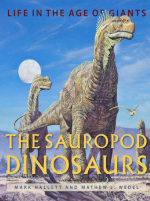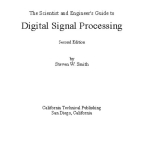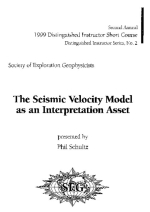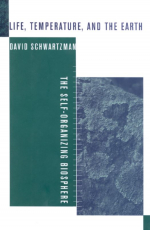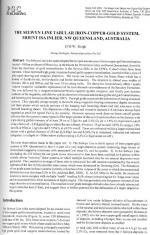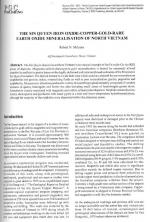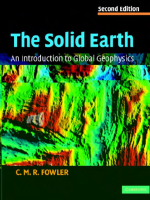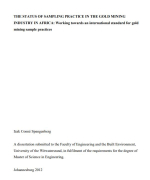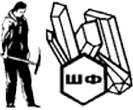The Salobo iron oxide copper-gold deposit is located in the Carajas Mineral Province, northern Brazil. The copper-gold ore is hosted by the Archean Salobo-Pojuca Group, which is formed by a sequence of amphibolites, banded iron formations, metagraywackes and quartzites. These rocks were deposited in a trondhjemitic basement, where a continental rift basin, that has been further described as a pull apart basin, was developed. Principal ore assemblages are magnetite-bornite-chalcocite and magnetite-bornite-chalcopyrite, with magnetite dominant and variable amounts of copper sulphides. The iron oxide copper-gold ore shows elevated concentrations of Ag, U, Co, Mo, F and LREE. Differences in geochemistry and textures between magnetite of iron-rich rocks and magnetite of banded iron formation suggest a hydrothermal origin for the mineralization. Fluid inclusion data for quartz veins and apatite indicate the involvement of highly saline fluids in the deposit formation. Adominantly magmatic source of the sulphur is indicated by isotope ratios determined for chalcopyrite and bornite (834S between 0.2%o and 1.6%o). Petrographic evidence supported by preliminary geochronological data indicates that the mineralization post-dates the metamorphism. Hydrothermal alteration effects on host amphibolites have been also investigated. The studied amphibolites occur as lenses or layers close to the contact with the gneissic basement or included in metagraywackes of the Salobo-Pojuca Group. Trace element chemistry of these rocks indicates that they are subalkaline basalts with tholeiitic affinity. Based on the K.,0 content, three alteration groups have been defined and informally named "less altered", "medium altered" and "very altered" types. They characterize rocks affected by different degrees of alkali metasomatism, resulting in major compositional changes. "Less altered" rocks (<0.5 wt% K.,0) show minor chemical modifications compared to the inferred average compositions of unaltered precursors. "Medium altered" rocks (0.5-3.5 wt% K20) show alkali metasomatism expressed by incipient sodic alteration (up to 4.5 wt% Na20) and superposed potassic alteration. "Very altered" rocks are characterized by extensive potassic alteration, with K-feldspar and biotite formation and high K20 (>3.5 wt%) values. The spatial association of "very altered" rocks with the main ore zone suggests a relationship between alkali metasomatism and mineralization. Similarities in the the hydrothermal alteration pattern combined with the ore mineralogy and chemistry indicate that the Salobo deposit belongs to the class of iron oxide (Cu-U-Au-REE) deposits.



